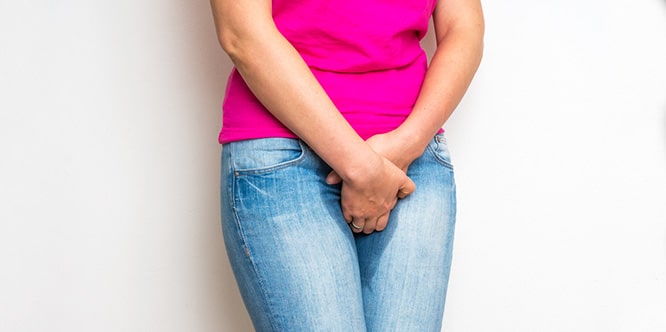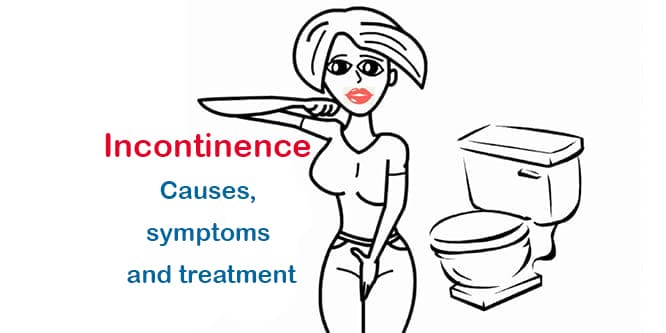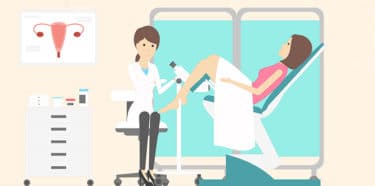Urinary incontinence is a common health problem especially in women and seriously effects the quality of life. The loss of bladder control and the involuntary leakage of urine are defined as incontinence and affect emotional, psychological and social life. Urinary incontinence, which is seen in one of four women, is perceived as an embarrassment problem and is often hidden and therefore delayed treatment. Although it is seen especially in older women in rural areas as normal, it negatively affects work and social life in urban areas.
Table of Contents
What is urinary incontinence?
Urinary incontinence is the inability of a person to control his bladder and prevent urine from leaking out. In cases of coughing, sneezing, pregnancy or obesity, urinary incontinence is more common. Although it is more common as person gets older, every elder does not have this problem. The bladder stores urine until it is ready to discharge. Muscles in the lower part of the pelvis hold the bladder. Normally, the bladder relaxes muscles and stores urine.
Bladder neck (end) is closed with muscle clusters called sphincters and urine doesn’t leak out. When ready to urinate, the brain sends a signal to the bladder, the bladder muscles contract, the muscles we call the sphincter relax and the urine is discharged. For healthy urination, the person should have healthy brain, spinal cord, bladder, urinary tract, nervous system and hormonal control and they should work in coordination with each other.
Causes of urinary incontinence
Urinary incontinence is not a disease, it is a symptom of a disease. It can be caused by daily habits, diseases or physical problems. The correct diagnosis of the cause of incontinence by a doctor is very important for the solution of the problem.
Temporary causes of urinary incontinence
Some beverages, foods and medicines stimulate your bladder and increase your urine amount. For example:
- Alcohol and caffeinated beverages
- Carbonated drinks and mineral water
- Acidic foods such as spicy, sugary and citrus fruits
- Chocolate, artificial sweeteners
- High doses of vitamin C
- Heart and blood pressure medications, tranquilizers and muscle relaxants

Medical causes of incontinence
- Urinary tract infection: Infection that affects the bladder can lead to urinary incontinence
- Constipation: The rectum is located near the bladder and most of the nerves are common. Hard stools in your rectum can increase your urinary frequency by over-stimulating nerves
Causes of permanent urinary incontinence
- Pregnancy and some birth cases
- Aging of the bladder muscle with age
- Decreased estrogen level after menopause
- Hysterectomy
- Urinary tract tumor or urinary tract stones
- Multiple sclerosis, Parkinson, stroke, brain tumor or spinal injuries
Risk factors for urinary incontinence
- Gender: Pregnancy, birth, menopause and anatomical structures of women increase the risk of urinary incontinence. However, men with prostate gland problems are at high risk.
- Age: As you get older, the muscles in the bladder and urethra lose their strength. Your bladder’s ability to control urine decreases and urinary incontinence occurs.
- Being overweight: Excessive weight exerts excessive pressure on the bladder and surrounding muscles. This weakens the muscles and causes urinary incontinence when coughing or sneezing
- Smoking: Tobacco use may increase your risk of urinary incontinence.
- Family history: If you have a family member with urinary incontinence, you may have it too.
- Some diseases: Neurological disease or diabetes may increase the risk of urinary incontinence.
Types of urinary incontinence
- Stress incontinence: Urine leaks when you exert pressure on your bladder by coughing, sneezing, laughing, exercising or lifting something heavy.
- Urge incontinence: You have a sudden, intense urge to urinate followed by an involuntary loss of urine. You may need to urinate often, including throughout the night. Urge incontinence may be caused by a minor condition, such as infection, or a more-severe condition such as a neurologic disorder or diabetes.
- Mixed incontinence: You experience more than one type of urinary incontinence.
- Overflow incontinence: You experience frequent or constant dribbling of urine due to a bladder that doesn’t empty completely.
- Functional urinary incontinence: A physical or mental impairment keeps you from making it to the toilet in time. For example, if you have severe arthritis, you may not be able to unbutton your pants quickly enough.
Which doctor to go for urinary incontinence?
If you are suffering from urinary incontinence, you should refer to the section “Urology” or “Obstetrics and Gynecology”. If your urinary inconvenience problem has reached a level affecting your life, you should get support from a urologist or obstetrician.
Diagnosis of urinary incontinence
It is very important to determine what kind of urinary incontinence problem you have. Your symptoms usually give information about the type, but some tests may be required to decide on the correct treatment. In general, 80-85% of patients can be diagnosed with anamnesis and physical examination without further examination. The methods for diagnosing urinary incontinence are:
- Bladder diary: During a few days, the patient records how much fluid he / she receives, the amount of urine he / she makes, how often he urinates, whether he wants to urinate, and how many times leakage in the day.
- Physical examination: With the vaginal examination, the strength of the pelvic floor muscles can be controlled.
- Urine analysis: The urine sample is examined to determine if there are signs of infection, blood traces or other abnormalities.
- Blood test: it’s for evaluation of kidney function.
- Postcoid residual (PVR): measures how much urine is left in the bladder.
- Pelvic ultrasound: Provides an image may help detect any abnormalities.
- Cystogram: An X-ray procedure provide an image of the bladder.
- Cystoscopy: A thin tube with a lens at the end is inserted into the urethra. The doctor may observe any abnormalities in the urinary tract.
Urinary incontinence treatment
Urinary incontinence treatment may vary according to the type, severity, and underlying cause. If this problem is experienced due to an illness, the disease must be treated first. It is better to start with the least invasive methods then other options can be tried if they fail.
Behavioral techniques
- Bladder training: This method is applied by delaying to go to the toilet after feeling the urge to urinate. For example, it starts with waiting by 10 min when you want to urinate. The purpose is to extend the time to go to the toilet between 2.5 and 3.5 hours.
- Double voiding: This involves urinating, then waiting for a couple of minutes, then urinating again.
- Toilet timetable: The person schedules bathroom at set times during the day, for example, every 2 hours.
- Fluid and nutrition management: To regain control of the bladder, alcohol, caffeine or acidic foods should be avoided. Reducing fluid consumption, losing weight or increasing physical activity can also help to alleviate the problem.
Pelvic floor exercises (Kegel exercises)
These exercises, also known as Kegel exercises, are particularly effective in the treatment of stress-type urinary incontinence, but may also be useful in the treatment of compression-type urinary incontinence. Kegel exercises are very simple but very effective exercises you can do in your daily life, on the bus or even while chatting. It is implemented as follows:
- Tighten the muscles you use to keep your urine and wait five seconds. Then rest for five seconds. (If this is hard for you, you can squeeze your muscles for 2 seconds and relax for 3 seconds.)
- Your goal should be to wait 10 seconds at a time. You can increase the time gradually.
- Aim for at least three sets of 10 repetitions each day.
If you think you can’t use the correct muscles, you can get help from a doctor or physiotherapist.
Electrical routing
The electrodes are inserted temporarily into the rectum or vagina to stimulate and strengthen the pelvic floor muscles. Mild electrical warnings from electrodes can be effective in the treatment of stress type and compression type urinary incontinence.
Urinary incontinence drug therapy
- Anticholinergics: These medications can calm the overactive bladder and be useful for the urge type of incontinence. Oxybutynin, tolterodine, darifenacin, fesoterodine, solifenacin and trospium are among these drugs.
- Mirabegron: This medication used in the treatment of urge type urinary incontinence relieves the bladder muscle and may increase the amount of urine that the bladder can hold. It can also help you empty your bladder by increasing the amount of urine you make.
- Alpha-blockers: In men with urge or overflow incontinence, these medications relax bladder neck muscles and muscle fibers in the prostate and make it easier to empty the bladder. Examples include tamsulosin (Flomax), alfuzosin (Uroxatral), silodosin (Rapaflo), doxazosin (Cardura) and terazosin.
- Topical estrogen: For women, applying low-dose, topical estrogen in the form of a vaginal cream, ring or patch may help tone and rejuvenate tissues in the urethra and vaginal areas. Systemic estrogen — taking the hormone as a pill — isn’t recommended for urinary incontinence and may even make it worse.
Medical devices for urinary incontinence
Medical devices used in the treatment of women with urinary incontinence problems are:
- Urethral attachment: a small, tampon-like disposable device inserted into the urethra before a specific activity, such as tennis, that can trigger incontinence. The insert acts as a plug to prevent leakage, and is removed before urination.
- Pessary: a stiff ring that you insert into your vagina and wear all day. The device is typically used in someone who has a prolapse that is causing incontinence. The pessary helps hold up your bladder, which lies near the vagina, to prevent urine leakage.
Interventional therapies
- Bulking material injections: A synthetic material is injected into tissue surrounding the urethra. The bulking material helps keep the urethra closed and reduce urine leakage. This procedure is generally much less effective than more-invasive treatments such as surgery for stress incontinence and usually needs to be repeated regularly.
- Botulinum toxin type A (Botox): Injections of Botox into the bladder muscle may benefit. Botox is generally prescribed to people only if other first line medications haven’t been successful.
- Nerve stimulators: A device resembling a pacemaker is implanted under your skin to deliver painless electrical pulses to the nerves involved in bladder control (sacral nerves).
Urinary incontinence surgical treatment
If other treatments do not work, various surgical procedures can treat problems that cause urinary incontinence:
- Sling procedures: Strips of your body’s tissue, synthetic material or mesh are used to create a pelvic sling around your urethra and the area of thickened muscle where the bladder connects to the urethra (bladder neck). The sling helps keep the urethra closed, especially when you cough or sneeze. This procedure is used to treat stress incontinence.
- Bladder neck suspension: This procedure is designed to provide support to your urethra and bladder neck — an area of thickened muscle where the bladder connects to the urethra. It involves an abdominal incision, so it’s done during general or spinal anesthesia.
- Prolapse surgery: In women with mixed incontinence and pelvic organ prolapse, surgery may include a combination of a sling procedure and prolapse surgery.
- Artificial urinary sphincter: In men, a small, fluid-filled ring is implanted around the bladder neck to keep the urinary sphincter shut until you’re ready to urinate. To urinate, you press a valve implanted under your skin that causes the ring to deflate and allows urine from your bladder to flow.
Recommendations for urinary incontinence patients
- You can improve your quality of life with general lifestyle changes. Pay attention to your doctor’s recommendations.
- Go to the toilet every 2-4 hours before feeling your bladder is full and before bedtime.
- Locate the closest toilet to your location.
- To keep you from rushing to get to the toilet at night, keep the nightlight on and set up a grab bar in your bathroom.
- You can use a pad to prevent urine leakage when outdoors. A wide range of pads are available for men and women. Change your pads as often as possible for dryness and hygiene.
- Men with urine dripping problems can use the drip dressers worn around the penis.
- Use odors.
- Avoid drinking too much liquid, coffee, tea while outdoors
- Wear dark colored clothing to make sure the stains are not seen.
- Have additional clothes and underwear with you.
- Do not forget to do Kegel exercises regularly.
- When traveling by plane or train, choose to sit on the couch near the toilet.
- If you are traveling by car, take frequent toilet breaks and sit on a matt to avoid vibrations.




